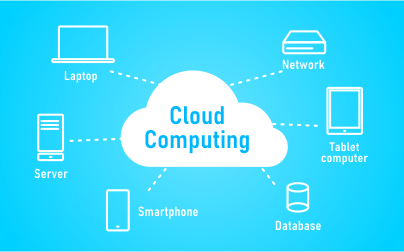Home >> Cloud Computing Solutions >> Vendor Management
Just face it. Most business projects enlist help from third-party providers to achieve different objectives. Your organization is no different. In fact, even large corporations and enterprises deal with different vendors to provide important goods and services. It is simply impractical to do everything yourselves.
The problem, however, is that multiple vendor management can be pretty complicated. Just getting one vendor on board requires different steps. Imagine doing these steps for different vendors at the same time.
Give Your Business Professional and Expert Vendor Management Help
This is where your trusted managed service provider (MSP) comes in. They deliver the hardware, software, and cloud services that your business needs to build and maintain strong vendor partnerships.
Your MSP can help you in different stages of the vendor management process including:

Creating a vendor management strategy
Before considering which vendors you want to bring in, you first have to establish the goals of the whole endeavor. What is the project trying to achieve and what are the guiding principles that should be looked at in the process? By knowing how your business wants to approach a certain goal will give vendors a clearer idea of what needs to be delivered.
Creating a vendor selection process
Once you have your strategy, you have to create a set of selection criteria to help you choose your vendors. This step is to achieve two goals. The first is to make the selection process as objective as possible. By setting a set of standards, you are removing as much bias to your selection process as you can. The second goal is to increase efficiency. Through a set of criteria, it is easier and faster to evaluate each vendor and decide if they qualify or not.
Once you have a selected number of vendors, you can ask bids based on your business’ requirements. From there, you can select the best one and negotiate the contract.
Actual Vendor Management
Once you have a vendor for a specific requirement of your project, the actual delivery of promises begin. Your business has to monitor the output and performance of each vendor. You have to make sure that the terms and deliverables agreed upon on the contract are met both by your business and the vendor. If there are needed changes, you will have to decide if it will be approved or not. Overall, this part is all about building a good relationship with your vendors during the duration of your contract.
Evaluation of Vendor Performance
Another factor you have to consider in vendor management is how you will evaluate the services rendered by each third-party provider. To make it as objective as possible, you have to set key metrics that will measure vendor performance. With these metrics, you can evaluate whether the vendor is able to deliver on their promises as per the contract agreed on and if the output is in line with the goals of the business project it is intended for.
In addition to the vendor management process, your trusted MSP can also provide you with a vendor management system that should help you manage and procure outside services in a more organized platform.
What is a vendor management system?
A vendor management system is often a web-based application that serves as a central hub that businesses can use to manage and procure services externally from the company. It gives your business a central platform that automates how you monitor, manage, and even evaluate different facets of your relationship with multiple vendors without having to go over each one manually.
Some of the most common features of a vendor management system includes:
- Consolidated Dashboard – This part of the system can give you an overview of each vendor contract you have. It will easily show how much is owed for each vendor and when each one is due. It can also include the breakdown of items and services covered for each vendor. This part can also show if a vendor contract is due to expire so you can either renew or let it lapse.
- Contact Database – You can create a central database of all vendors that you have met so that you can easily contact them when the need arises. You can freely add or modify vendor information anytime, set a category based on the service they provide, and even add an employee as a point-of-contact for each vendor.
- Vendor Evaluation and Review Section – Some systems have a built-in evaluation and rating system where you can set metrics like quality of service, time of delivery, complaint history, etc. From there, you can make a proper evaluation that is both efficient and objective.
thinkIT Solutions for Your Vendor Management Needs
thinkIT Solutions is a full-service managed IT service provider that also provides businesses with vendor management help. We are dedicated in taking on as much of your IT needs so you can focus on the success of your business.
For inquiries on how thinkIT Solutions can help you manage multiple vendors, contact us now at (504) 608-1132!


